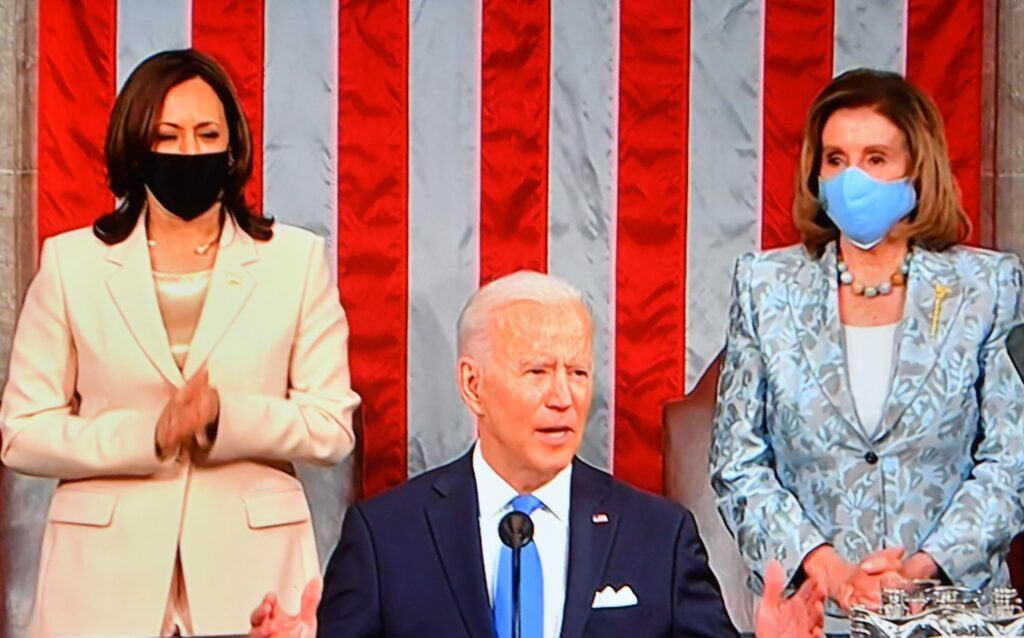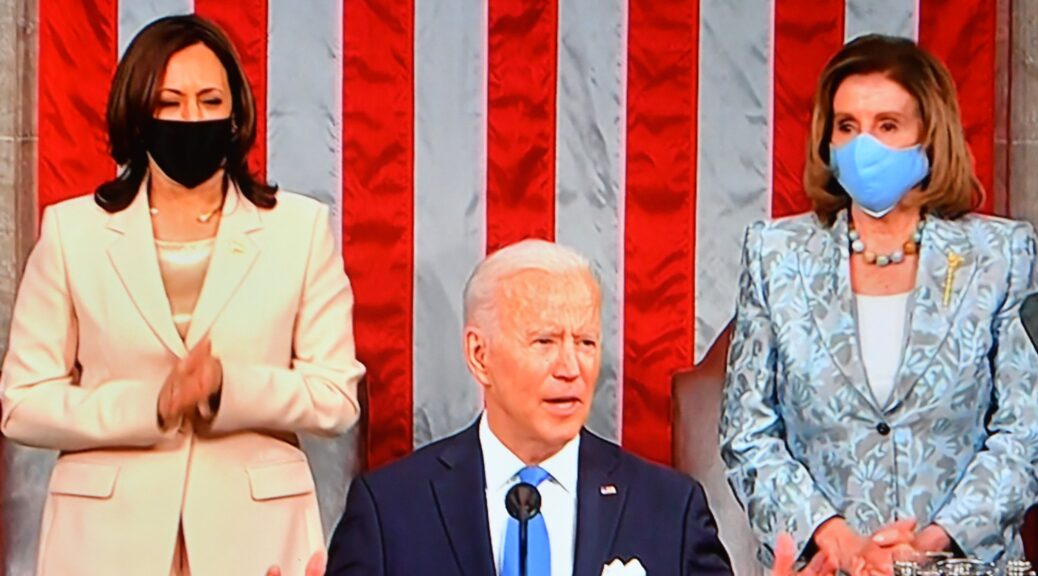
With the Russian invasion of Ukraine likely to take up a large measure of President Joe Biden’s first State of the Union speech, he is unlikely to have enough time or space to detail his accomplishments and his agenda going forward. Here are more details from the White House about the President’s plan to rebuild America’s crumbling infrastructure over the next year:
The historic Bipartisan Infrastructure Law will rebuild crumbling road and bridges, replace lead pipes, help make available reliable, affordable high-speed internet to every family in America, and produce concrete results that change people’s lives for the better. It will also support American manufacturing jobs by making sure taxpayer dollars are spent purchasing American made goods. Rebuilding our infrastructure and supply chains here at home, and making more here in America, means we can create more good jobs, move what we make more efficiently, and ultimately lower prices for the American people. By reaching all communities all across the country – including rural communities and historically underserved populations – these once-in-a-generation investments will position the United States to win the 21st century.
In the first 106 days since President Biden signed the Bipartisan Infrastructure Law, the White House Infrastructure Implementation Team has hit the ground running to deliver concrete results for the American people. Nearly $100 billion of dedicated funding has been announced and is headed to states, territories, Tribes and local governments, with another nearly $50 billion of notices of funding opportunity released. To date, over 4000 projects have been announced, from airport improvements to port upgrades to superfund cleanup sites. Over 90 percent of Bipartisan Infrastructure Law funding will be spent by non-federal partners, meaning the Biden-Harris administration will be partnering with states, territories, Tribes, local governments and others to deliver the crucial infrastructure projects and the good-paying jobs created by these investments.
In his first State of the Union Address, President Biden will highlight how our historic federal investments in infrastructure will create a visible impact in the lives of American families this year by committing to start repair on 65,000 miles of roads and 1,500 bridges. The President will also commit to rapid progress across every facet of the law.
TRANSPORTATION
- Roads & Bridges: As a result of the Bipartisan Infrastructure Law, the Department of Transportation announced $52.5 billion for highways and more than $5.3 billion for bridges for fiscal year 2022. Over the next year, states, territories, Tribes and local governments will start to improve 65,000 miles of roads and 1,500 bridges with federal funding, representing at 44% and 50% increase respectively from average annual improvement levels over the past six years.
- Airports: In December, the Federal Aviation Administration (FAA) at USDOT announced $3 billion for 3,075 airports across the country that can use investments to upgrade critical infrastructure. Over the next year, FAA will be able to invest in over 600 airport infrastructure projects, including preserving 400 pavement projects on taxiways and runways.
- Transit: The Bipartisan Infrastructure Law includes the largest Federal investment in public transit in history. Over the next year, communities will be investing in an estimated 15,000 new buses, ferries and subway cars, improving commutes for working Americans, families, and students across the country and reducing greenhouse emissions.
- Rail: The Federal Railroad Administration and Amtrak are transforming the nation’s transportation system. In the next year, Amtrak is investing Bipartisan Infrastructure Law funding in 75 new, Made-in-America locomotives, at least 73 Made-in-America Intercity Trainsets, and major improvements to facilities in the Northeast Corridor.
- Ports, Waterways, and Flood Mitigation: With $14 billion in funding from the Bipartisan Infrastructure Law and other appropriations, the U.S. Army Corps of Engineers will advance over 500 projects across 52 states and territories to strengthen supply chains, improve waterways, and reduce flooding. Additional projects will be funded by the Port Infrastructure Development Program.
HIGH-SPEED INTERNET
- Broadband Access & Deployment: In the next year, the Department of Commerce will issue final guidance and notices of funding opportunity for the Broadband Equity, Access and Deployment Program and the Middle Mile Broadband Infrastructure Program, which together will distribute more than $43 billion in broadband funding. The Department of Agriculture will issue a new funding opportunity notice for the ReConnect program which will provide nearly $2 billion in funding for rural broadband deployment.
- Broadband Affordability: Over the next year, the Federal Communications Commission (FCC) will build on the more than 10 million lower-income households already receiving subsidized internet service through the Affordable Connectivity Program. The FCC will also adopt rules requiring broadband providers to display easy-to-understand labels to allow consumers to more effectively comparison shop for broadband services.
CLIMATE, CLEAN ENERGY, AND ENVIRONMENT
- Clean Water: The Environmental Protection Agency (EPA) announced $7.4 billion for Fiscal Year 2022 in Bipartisan Infrastructure Law funding will be available to states to upgrade America’s aging water infrastructure, sewerage systems, lead pipes and service lines, and more through their State Revolving Fund programs. By this time next year, using Bipartisan Infrastructure Law funding alone, EPA will have worked with state and local governments to fund more than 400 new water projects from replacing lead service lines to improving drinking water systems.
- Abandoned Mine Lands: The Department of the Interior (DOI) announced nearly $725 million in Fiscal Year 2022 funding for 22 states and the Navajo Nation to create good-paying union jobs and catalyze economic opportunity by reclaiming abandoned mine lands. Over the next year, DOI expects states, Tribes, and other partners to reclaim over 15,000 acres of abandoned mine lands, as well as launch new reclamation efforts that will ultimately address tens of thousands of additional acres across the country using Bipartisan Infrastructure Law funds. This investment delivers on President Biden’s historic commitment to investing in the revitalization of the energy communities that have powered our country for generations.
- Orphan Wells: The first $1.15 billion in funding is now available to 26 states to create good-paying jobs cleaning up orphaned oil and gas wells across the country. Over the next year, we expect the DOI’s new Orphan Well Program will start work plugging, capping, and remediating over 8,000 abandoned oil & gas well sites in communities across the country.
- Superfund: EPA announced $1 billion to initiate cleanup and clear the backlog of 49 previously unfunded Superfund sites and accelerate cleanup at dozens of other sites across the country, with work expected at more than 80 Superfund cleanup projects in the next year.
- Great Lakes Restoration: EPA announced $1 billion for the Great Lakes Restoration Initiative, including $200 million in Fiscal Year 2022, to accelerate progress in the clean-up and restoration of the Great Lakes’ most environmentally degraded sites, securing clean water and a better environment for millions of Americans in the Great Lakes region. In the next year, EPA will work across more than 20 sites across the Great Lakes basin targeting open areas of concern.
- Wildfire Resilience: In the next year, the DOI will increase its work to reduce the risk of wildfires to communities by more than 30 percent– removing over 300,000 acres of burnable fuels in the places where communities and wildlands meet – as well as the start of work to reduce wildfire risk on an additional 250,000 acres across the country. With BIL funding and existing appropriations, the US Forest Service at the Department of Agriculture also expects to execute hazardous fuels reduction work on more than 4 million acres over the next year, including reforesting up to 400,000 acres to create new carbon sinks on previously burned lands.
- Critical Mineral Refinery: The Department of Energy (DOE) released a Request for Information for the construction and operation of a first-of-its kind $140 million demonstration facility to extract and separate rare earth elements and other critical minerals from coal ash, mine tailings, acid drainage, and other legacy fossil fuel waste to sustainably produce materials key to next-generation clean energy technologies. This facility will support good-paying manufacturing jobs and help secure a sustainable domestic supply chain to fight the climate crisis.
- Battery Manufacturing: This Spring, DOE will make available nearly $3 billion to bolster domestic manufacturing of advanced batteries for electric vehicles and energy storage. This includes refining and production of battery materials, manufacturing of battery cells and packs, and end-of-life recycling to create good-paying manufacturing jobs and support growing demand for electric vehicles and energy storage to meet the Administration’s ambitious net-zero climate goals.

